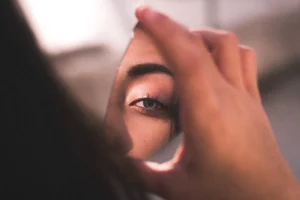How to Stop Sweating: Guide to Staying Dry and Comfortable


How to Stop Sweating: A Comprehensive Guide


Sweating is a natural process that helps regulate body temperature and cool down the body. However, excessive sweating can be embarrassing and uncomfortable, affecting your confidence and daily activities. If you’re tired of dealing with excessive sweating, you’ve come to the right place. In this comprehensive guide, we will explore various strategies and techniques to help you stop sweating. From lifestyle changes to medical treatments, we will cover it all. So, let’s dive in!
Understanding Sweating
Sweating is a normal bodily function that occurs when the body needs to cool down. It is triggered by factors such as physical activity, heat, emotions, and hormonal changes. Sweat is produced by sweat glands located all over our body. There are two types of sweat glands: eccrine glands, which are found all over the body, and apocrine glands, which are mainly concentrated in areas like the armpits and groin.
While sweating is a necessary process, excessive sweating, also known as hyperhidrosis, can occur due to various reasons, including genetics, overactive sweat glands, or underlying medical conditions.
Lifestyle Changes to Reduce Sweating
When it comes to managing excessive sweating, lifestyle changes can play a significant role. Here are some tips to help you reduce sweating through simple modifications to your daily routine:
1. Use Antiperspirants
Antiperspirants are specifically designed to reduce sweating. Look for antiperspirants that contain aluminum chloride, as it helps block sweat ducts and reduce perspiration. Apply antiperspirant to clean, dry skin before bed and in the morning for optimal results. Additionally, consider using clinical-strength antiperspirants for more severe sweating.
2. Wear Breathable Fabrics
The choice of clothing can significantly impact sweating. Opt for breathable fabrics such as cotton and linen, as they allow air circulation and help evaporate sweat. Avoid synthetic materials like polyester or nylon, as they trap heat and moisture, exacerbating sweating.
3. Choose Loose-Fitting Clothes
Wearing tight-fitting clothes can restrict airflow and increase body temperature, leading to more sweating. Opt for loose-fitting clothes that allow air circulation and keep you cool. Flowy dresses, loose shirts, and relaxed-fit pants can be excellent choices.
4. Maintain a Healthy Weight
Being overweight can contribute to excessive sweating, as the body has to work harder to regulate temperature. Engage in regular physical activity to maintain a healthy weight and promote overall well-being. Consider incorporating exercises that focus on relaxation and stress reduction, such as yoga or Pilates.
5. Manage Stress
Stress and anxiety can trigger excessive sweating. Practice stress management techniques to keep your stress levels in check. Deep breathing exercises, meditation, and engaging in hobbies that help you relax can be beneficial. Additionally, consider seeking professional help if stress and anxiety are impacting your daily life.
Medical Treatments for Excessive Sweating
If lifestyle changes alone do not provide sufficient relief, there are various medical treatments available for excessive sweating. Consult with a healthcare professional to explore the following options:
1. Prescription Antiperspirants
If over-the-counter antiperspirants are not effective, your doctor may prescribe stronger antiperspirants that contain aluminum chloride hexahydrate. These prescription-strength antiperspirants can help reduce sweating in the affected areas. Follow the instructions provided by your healthcare provider for optimal results.
2. Iontophoresis
Iontophoresis is a procedure that uses electrical currents to temporarily block sweat glands. This treatment is commonly used for excessive sweating in the hands and feet. The affected areas are submerged in water, and a low electrical current is passed through the water, effectively reducing sweat production. Multiple sessions may be required for noticeable results.
3. Botox Injections
Botox injections are a popular treatment for excessive sweating. Botulinum toxin, commonly known as Botox, is injected into the affected areas, blocking the nerve signals responsible for sweat production. Results typically last for several months. This treatment is commonly used for underarms, palms, and soles of the feet.
4. Oral Medications
In certain cases, oral medications such as anticholinergics may be prescribed to reduce sweating. These medications work by blocking the chemical messenger responsible for activating sweat glands. However, they may have side effects, and their use should be carefully monitored by a healthcare professional.
5. Surgery
If other treatments are ineffective, your doctor may recommend surgical options. Sweat gland removal and sympathectomy are surgical procedures that can be considered as a last resort. Sweat gland removal involves the removal of sweat glands from the affected areas, while sympathectomy interrupts the nerve signals to the sweat glands. These procedures are generally reserved for severe cases of hyperhidrosis.
Conclusion
Excessive sweating can be a challenging condition to manage, but with the right strategies and treatments, it is possible to find relief. Start by implementing simple lifestyle changes such as using antiperspirants, wearing breathable fabrics, and managing stress. These steps can make a significant difference in reducing sweating. If your sweating persists and affects your daily life, consult a healthcare professional who can provide further guidance and explore medical treatments tailored to your needs. Remember, there are options available to help you stop sweating and regain your confidence and comfort.







